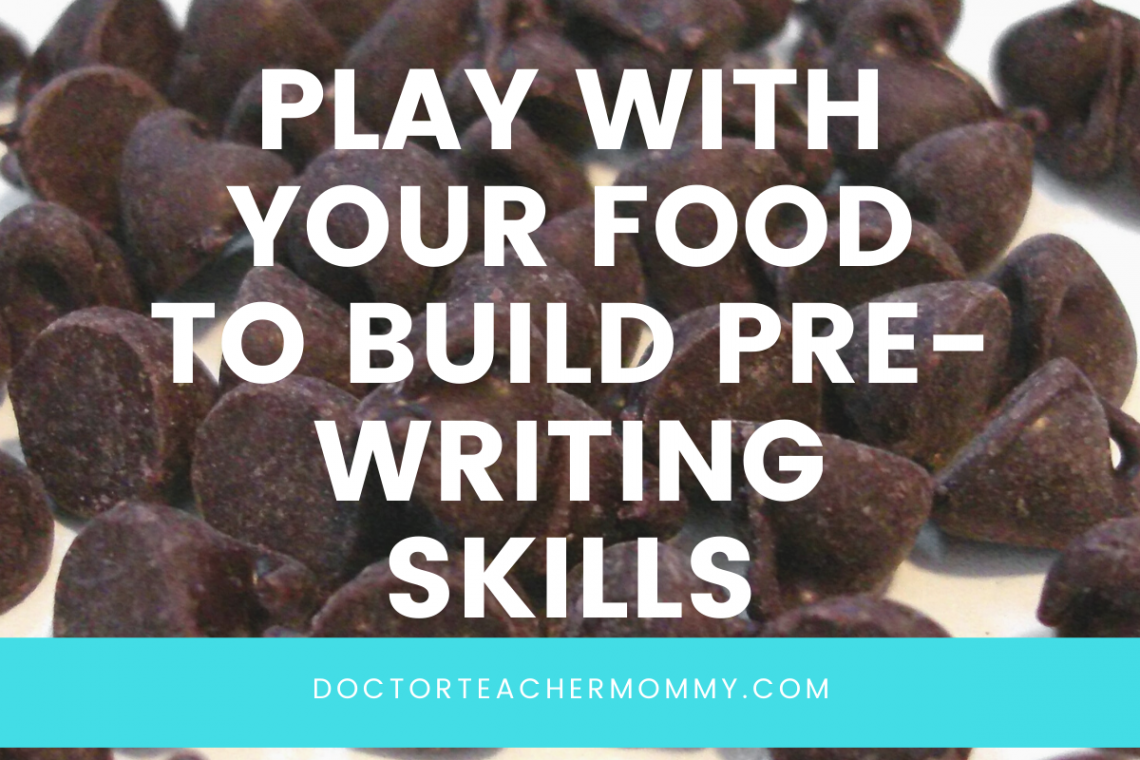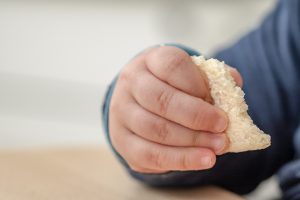
Play With Your Food To Build Pre-Writing Skills!
Did you ever think you would encourage your little one to play with their food? What if it would help to build their pre-writing skills? Play on and eat up little one!


What Are Pre-Writing Skills?
Pre-writing skills are the fundamentals young children need in order to complete more advanced writing tasks. Between the ages of 18 months-4 years old, there is a progression from scribbling to imitating written lines to independently creating marks on a page that resemble a vertical line, horizontal line, circle, etc. These are all important lines and shapes needed to form letters and numbers.
As a teacher, I noticed that some young children had difficulty starting to write, not because of a lack of exposure to writing materials or letters/numbers but because they lacked the ability to properly use writing materials.
Why Is This Difficult For Some Kids?
One of the biggest reasons young children struggle with using writing materials properly is the lack of finger strength and dexterity needed for these tasks. Strength can be seen in how loose or tightly a child holds a pencil or how much or how little they press the pencil on the paper.
Dexterity means how easily a child can hold the pencil between their fingers with a pincer grip (rather than a fist grip) or how easily the child can make smaller, more intricate marks.

How Does My Toddler Build Pre-Writing Skills When Eating?
Picture your little one picking up food off their highchair. (Don’t imagine the mess!) When they are very little, they will use their whole hand to grab as much food as possible and push it all into their mouth. Very little of that food may actually make it into their mouth, but hey, they’re happy!
As they get a little older, you will start to notice that they will pick up foods differently. Rather than grabbing everything possible, they will begin using their first finger and thumb to pick up a few items at a time. With this careful approach, most of the food will make it into their mouth.
This is a super important skill your little one discovers while eating. Using just these two fingers to pick up small food items is teaching them how to coordinate those two fingers, how to manipulate the food item, how much pressure they need to use to hold the food (or how much pressure to squish the food), and how to coordinate bringing what they see to their mouth. Phew, that’s a lot of thinking for their little brains just to eat a few bites!

While they may just be eating one meal, this is some of the most important practice your little one can do for future pre-writing skills. Later they will need the same skill set to coordinate those same fingers around a pencil, manipulate the pencil to move on paper, and see how much pressure they need to make marks appear (or what happens with too much pressure applied to the pencil’s point), and using all of this information to make specific lines or shapes.
What Foods Help Build Pre-Writing Skills?
Hungry yet? Me too! Below is a list of just some of the foods that can help with your little one’s finger strength and dexterity:
• Israeli Couscous
• Cooked Beans
• Blueberries
• Cooked Chickpeas
• Cooked Corn
• Cheerios
• Grapes (cut into quarters/halves depending on their age)
• Grape Tomatoes (cut into quarters/halves depending on their age)
• Cooked Spaghetti or Linguini Pasta (cut into quarters/halves depending on their age)
• Cooked Lentils
• Shredded Cheese
• Cooked Elbow Pasta
• Green Peas (cooked or frozen for those teething gums)
• Cooked Orechietti Pasta
• Mini Chocolate Chips
*Please use your discretion and caution when serving food based on your little one’s age, their prior eating experience, food allergies, etc. *

Remember, young children need LOTS of repetition and exposure to different experiences.
While you may not see their writing abilities blossom after one meal, know that you are giving them the time and practice they need to strengthen all of their skills for future writing! Enjoy eating with your little one!


